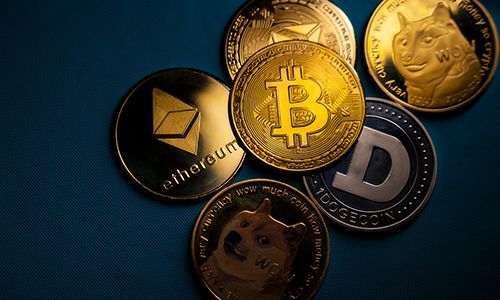What Is Cryptocurrency, Really?
When I first heard about cryptocurrency, it sounded like something from a science fiction movie. Digital money that no one controls, existing only online, traded between people across the world without banks or governments? It felt strange, maybe even impossible. But the deeper I looked, the more it started to make sense.
Cryptocurrency is a kind of money that lives entirely in the digital world. It’s built on blockchain technology, which works like a public record of every transaction ever made. Everyone can see it, but no one can change it. That’s the beauty of it, it’s open and secure at the same time.
Unlike traditional money, there’s no bank or government managing cryptocurrency. It’s decentralized, which means the control and decision-making power are spread across a network of users. That’s one of the biggest reasons people are drawn to crypto, it gives full ownership and freedom over your own funds.

How Cryptocurrency Works
Every time someone sends or receives crypto, that transaction is added to the blockchain. But before it gets there, the network needs to confirm that it’s real. That’s where miners or validators come in.
In proof-of-work systems like Bitcoin, miners use computers to solve complex puzzles. When they find the right answer, they add a new block to the chain and earn rewards. This process takes a lot of power and hardware, which is why you often see big mining setups filled with machines running 24/7.
Other networks, like Ethereum, use proof-of-stake instead. Here, people “stake” their coins as security. The more they stake, the higher their chance of being chosen to confirm transactions. This system uses far less electricity and is becoming more popular for new projects.
Why People Are Interested in Crypto
Some people see crypto as an investment. Others like the idea of digital money that no one can control or freeze. And some simply love the technology behind it.
One of the best parts of cryptocurrency is that it’s borderless. You can send Bitcoin or any other coin to someone on the other side of the world in minutes, without banks, middlemen, or high fees. That level of freedom is something we don’t get in traditional finance.
Of course, there are risks. Crypto prices can swing wildly. One day you’re up 50%, the next you’re down just as much. There are also scams and fake projects. The golden rule is simple: never invest more than you can afford to lose, and always do your own research.
How to Store and Use Cryptocurrency
Owning crypto means being your own bank. Your coins are stored in a wallet, which can be an app, website, or physical device. Each wallet has a public address (like an account number) and a private key (like a password).
The private key is what proves that you own your coins. Lose it, and there’s no way to recover your funds. That might sound scary, but it’s also empowering, because no one else can touch your money without your permission.
Many people keep crypto on exchanges, but experienced users prefer private wallets for better security. The saying “not your keys, not your coins” is one of the first lessons every crypto beginner learns.
Beyond Bitcoin: Altcoins and New Ideas
Bitcoin started it all, but there are now thousands of altcoins, alternative cryptocurrencies built with new ideas. Ethereum introduced smart contracts, which let you run code on the blockchain automatically. Solana and Cardano focus on faster transactions and scalability.
Then there are meme coins like Dogecoin or Shiba Inu, which began as jokes but gained massive communities. Some altcoins aim to fix real-world problems, while others are pure speculation. Learning to spot the difference takes time, patience, and experience.
Crypto Beyond Money
Blockchain isn’t just about currency. It’s a technology that can verify digital ownership, track products in supply chains, store records securely, and run decentralized applications.
DeFi (decentralized finance) uses crypto to replace traditional financial systems, allowing lending, borrowing, and earning interest without banks. NFTs brought art and digital ownership into the spotlight. The use cases are still expanding every year, and we’re only scratching the surface.
What to Watch Out For
The crypto world is still young and unpredictable. Governments are still figuring out regulations, and scams pop up often. Always check the legitimacy of the platforms you use and keep your private keys safe.
Mining can be energy-heavy, which has raised environmental concerns, especially around Bitcoin. That’s why greener solutions like proof-of-stake and renewable-powered mining are gaining traction.
Looking Ahead
Crypto feels a lot like the early days of the internet. Not everyone understands it yet, and many doubt it will last. But just like the internet, it’s already changing the world in quiet but powerful ways.
It’s giving people in developing countries access to money and banking for the first time. It’s reshaping how value moves across the world. And for many of us, it’s a chance to be part of something new.
Whether you’re here to learn, invest, or just explore, one thing’s certain, the world of cryptocurrency is here to stay.
Let’s connect! I post news, stats, and real mining results over on X.